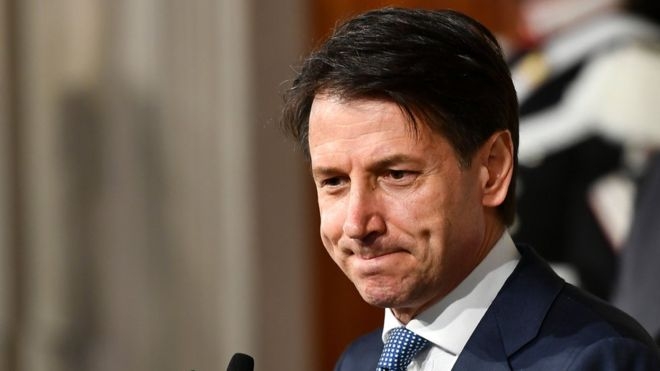
Giuseppe Conte

Giuseppe Conte
By Ollie Gratzinger | Editor-in-Chief
After more than a year of political and financial uncertainty, Italy’s government collapsed on Tuesday following the resignation of Prime Minister Giuseppe Conte.
According to a Duke article from the spring of 2018, Conte attended Duquesne University in the 1990s through the Villa Nazareth program, which allows Italian students to attend graduate programs on the Bluff and undergraduates from Duquesne to attend classes at Villa Nazareth in a sort of cultural exchange program. While Conte was not a student, he was engaged in legal research on campus, and had met the university’s then-president John Murray, as well as A.J. Palumbo.
Conte had become prime minister in June 2018, after the anti-establishment Five Star Party (M5S) reached a coalition with the far-right and eurosceptic League. The coalition, however, was tenuous at best, and it fell apart earlier this month, with tensions reaching an apex following disputes over key policy decisions regarding immigration and Europe.
In an hour-long speech on Aug. 20, Conte criticized Matteo Salvini, Italy’s deputy prime minister, interior minister and frontman of the League, accusing him of putting his personal interests first, thus jeopardizing the national interests of the country. His concerns were addressed to the nation’s upper legislative chamber, and his resignation was submitted to President Sergio Mattarella, who will decide what comes next.
Salvini has allegedly been gunning for Conte’s position as prime minister, and empowered by his increasing popularity and the waning popularity of Conte and the M5S, Salvini had called for new elections — a move that Conte had called “irresponsible.”
Salvini’s popularity, and thus his motions to unseat Conte, fit into a broader theme of far-right resurgence across Europe. The League stands by its populist “Italy First” sentiment, and under Salvini’s hand, it has embraced a staunch anti-immigration policy.
The new cloud of unease settling over Italy could jeopardize the already weakened financial state of the country, as borrowing costs threaten to rise; According to CNBC, Italy’s debt-to-GDP ratio exceeds 130% — the highest in Europe, aside from Greece, which rests at just over 170% as of 2017. With Italian growth rates seemingly locked in place, the government risks an overshoot of deficit spending as it enters an era of political disquiet.
The future is uncertain, and one of several things could happen: Salvini could get his wish for fresh elections. But in submitting his resignation, Conte left the power in the hands of Mattarella, sidestepping Salvini’s call for a confidence vote, which he and the League had immediately withdrawn.
It’s also possible that Mattarella could begin putting together a new permanent governing coalition or a temporary caretaker government. There’s talk about the center-left Democratic Party partnering with the M5S, which would effectively oust both the League and Salvani.
The Democratic Party and the M5S have rejected one another’s policies and advancements in the past, and even though some deep differences form a stark divide between the parties, necessity might bring them to form an unlikely coalition.




